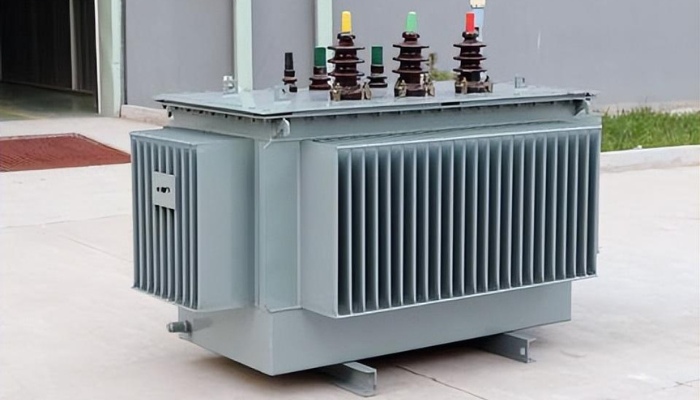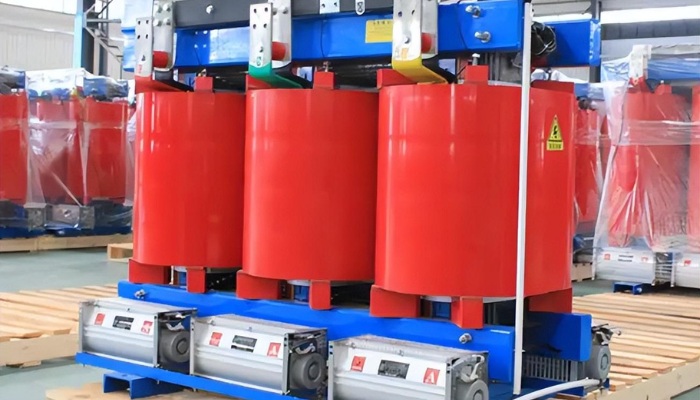Distribution Transformers, as a part of industrial production, are key to meeting the daily production needs of industry. Before the transformer is put into use, it should undergo a voltage withstand test to grasp the overall performance of the transformer, which is also applied to a pad mounted transformer. 
1、 Analysis of voltage withstand test methods
Transformer insulation is mainly divided into two types: main insulation and longitudinal insulation. The former mainly refers to the insulation of other structures outside the coil itself, including the insulation of oil tanks, iron cores, and other positions; The latter refers to the insulation between different points and parts of the transformer winding resistance at different potentials, such as coil turn to turn insulation. In order to fully understand the ability of transformer insulation to withstand overvoltage, it is generally necessary to conduct two tests: AC and induced voltage withstand.
(1) Testing method for AC withstanding voltage . During the whole testing process, the port of the tested coil needs to be connected to the test voltage, while the non test port needs to be grounded to ensure the safety of the testing personnel.
The equipment required for AC voltage withstand test can refer to: power frequency voltage withstand test device, series resonance voltage withstand test device, and triple frequency voltage withstand test device.
In addition, during the testing, if the tested object experiences flashover or breakdown, its capacitance will suddenly decrease and strong electromagnetic oscillations will occur inside the equipment. In this regard, the testing personnel should connect protective resistors in series within the circuit to effectively control overcurrent. At the same time, resistors should also be reasonably selected to avoid the impact of overvoltage on equipment performance. The selection of resistors should adhere to the principle of rationality to achieve effective protection of the equipment. Before starting the AC voltage withstand test, sufficient preparations should be made, such as determining the values of the high-voltage test transformer, voltage, and resistance. The altitude is an important factor affecting the required value of the test. With the increase of altitude, the Density of air will also decrease, which is prone to ionization. So before conducting the test, the voltage value of the transformer test in high-altitude areas should be adjusted accordingly to improve the accuracy of the test;
(2) Induction voltage withstand test method. At present, due to the influence of various manufacturers’ production processes, many transformer neutral points will reduce insulation performance. For transformers with voltages of 110kV and 220kV, the insulation is 35kV and 110kV respectively. Conducting AC withstand voltage tests on such transformers cannot obtain effective test results. Therefore, it is necessary to adopt an induction test method.
The double coil transformer is applied from the low voltage side of the tested equipment, while the two corresponding transformers that have not been tested on the high voltage side are connected in parallel and grounded, and connected in series with the tested end to meet the test voltage requirements. In addition, before the induced voltage withstand test, the neutral point should be treated accordingly. For example, in order to meet the research of the main insulation and longitudinal insulation tests, it is necessary to raise the neutral point potential appropriately to provide support for the coil,.
Normally, the current curve of the transformer core approaches the curved part at rated frequency and voltage. If the former is higher than the latter, the core will be in a saturated state, and the current will also increase accordingly, ultimately reaching an unacceptable level. Therefore, in order to solve the above problems, measures can be taken to increase the power frequency for optimization.
Through the study of two test methods, it can be found that the AC withstand voltage test can only be conducted on fully insulated equipment and can only obtain the electrical strength of the main insulation of the equipment, while the longitudinal insulation does not withstand withstand withstand voltage, and its insulation properties are unknown. The induced voltage withstand test applies high-frequency voltage from the low-voltage side of the tested transformer, which can only test the main insulation and longitudinal insulation of the graded insulation equipment, and cannot achieve the test of fully insulated equipment. Therefore, in order to achieve the overall insulation performance test of transformers, the two are generally integrated to complete the test.
2. Precautions during the testing
Firstly, due to the destructive nature of the withstand voltage test, the voltage applied during the test is often several times the rated voltage of the transformer. Excessive voltage can damage the insulation medium, leading to phenomena such as enlargement and heating. Therefore, during the test process, it is necessary to fully consider the characteristics of the insulation medium and the actual operation of the equipment, and reasonably determine the test voltage to avoid endangering the personal safety of the test personnel and the equipment.
Secondly, after connecting the test wiring, it needs to be inspected by other personnel and confirmed that there are no losses.
Third, before applying pressure, make sure that the value of the Pressure regulator is at zero, and it is not allowed to impact the closing at more than 1/3 of the specified test voltage value. By reasonably controlling the voltage value, the withstand voltage time process of the equipment when approaching the specified voltage value can be avoided, providing convenience for the test personnel to observe the test process. At the same time, during the test process, the observation of the measuring device should also be strengthened. When the protective action is activated, the reasons should be analyzed, and adverse factors that affect the test results should be eliminated in a timely manner to ensure the orderly progress of the test. It is particularly important to note that the power supply should not be cut off when the voltage value is high, in order to avoid transient situations that may cause equipment breakdown, damage to measuring instruments, etc.
Fourthly, during the test, if the equipment surface is affected by factors such as air humidity and dirt, which can cause flashover on the equipment surface, the test result is considered unqualified and should be cleaned accordingly before retesting to ensure the accuracy of the test results. In addition, if discharge or other phenomena occur during the pressure test, the power supply should be cut off in a timely manner. Due to the overvoltage generated by discharge, similar to the chopped wave impulse, under continuous action, it is bound to damage the longitudinal insulation of the equipment, causing inter turn and inter layer breakdown.
Fifthly, it is particularly important to note that when the testing equipment is made of organic insulation material, personnel should immediately touch it after completing the test. If there is a local heating situation, it indicates that the insulation performance of the equipment is poor. Corresponding treatment should be carried out before conducting a secondary test to determine whether the equipment performance meets industrial production requirements.
Sixth, during the testing of multiple equipment, the transformer that has broken down should be marked in a timely manner to provide assistance for subsequent work.
PowerTel & his associated factories are able to provide you a wide range of distribution transformer used for various industries and application; a custom distribution transformer and its associated electrical switchboard is always available on your exact request.
Please feel fre to contact our engineers.
